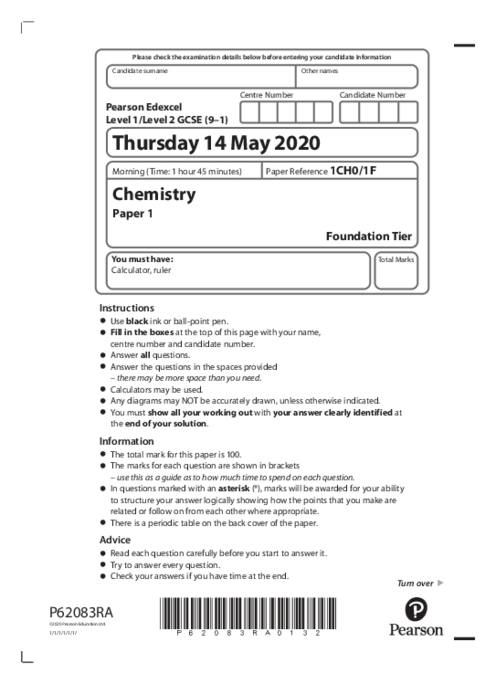Chemistry 1CH0/1F November 2020
omer uner
1. Atomic Structure and Bonding | Identification of subatomic particles, electron configurations, dot and cross diagrams, and differences between ionic, covalent, and metallic bonding.
2. Periodic Table and Group Trends | Trends in alkali metals, halogens, and noble gases, periodic table organization, and predicting element properties based on group placement.
3. Chemical Reactions and Equations | Balancing chemical equations, types of chemical reactions including neutralization, displacement, and combustion, and interpreting reaction profiles.
4. Acids, Bases, and pH | Understanding the pH scale, acid-alkali reactions, titration techniques, and choosing suitable indicators for acid-base reactions.
5. Electrolysis and Metal Extraction | Electrolysis principles, redox reactions, reactivity series and metal extraction, and benefits of recycling metals over extraction from ores.
6. Separation Techniques and States of Matter | Chromatography, filtration, distillation, crystallization, phase changes, and understanding energy changes during state transitions.
See More Paper 1 9 months ago
Chemistry (1CH0) Subject directory
All resources in one place
Related Past Papers
Related Tutorials
Crash report
